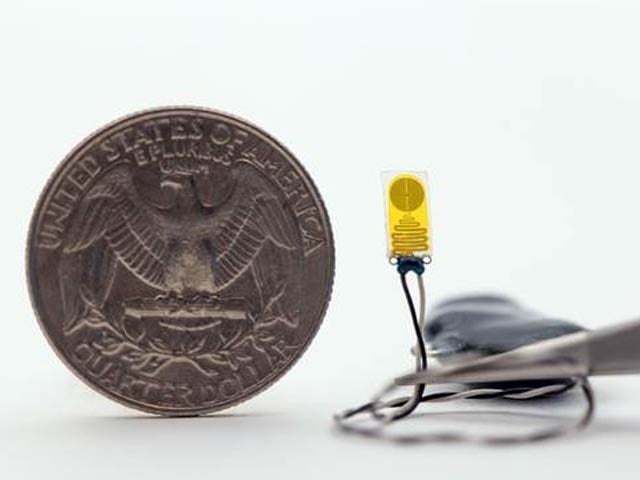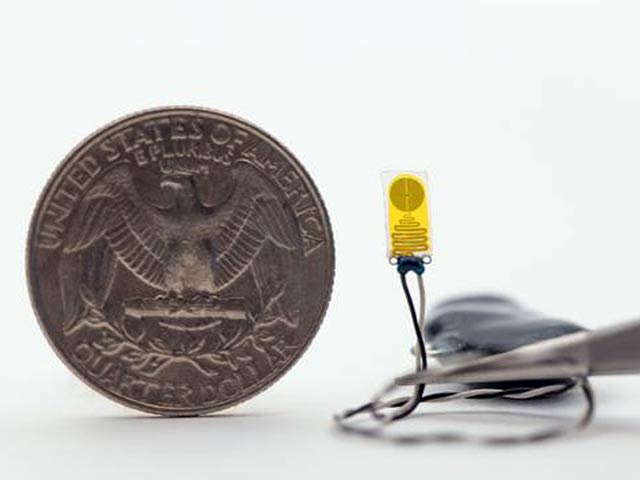
In the photo, the world’s first sensor is featured under a coin size comparison. Photo: Courtesy of Joanna Ciati, Northwestern University
Illinois: We know that despite all precautions, transplanted organs from one person to another are rejected by the patient’s body because the body’s natural immune system considers them to be foreign bodies. Now the world’s first device has been developed which can specifically inform about the success or failure of a kidney transplant in the first stage.
Northwestern University experts have created a very small electronic device that sits on top of a donated organ and can transmit data from the transplanted organ to a phone or tablet. This allows doctors to determine the success or failure of the transplant and can also prevent further damage to the organ.
It is a very thin device that sticks to the kidney and takes care of the heat loss in it. That is, it notes the internal inflammation and keeps the doctors aware of it. It has also been tested in small animal models.
Experiments with small mammals such as mice show that scientists can detect organ failure as early as three weeks before it occurs, which is slightly better than conventional methods. This not only allows doctors to take further measures but may also prevent organ failure.
His paper was published in the journal Science on September 8, and researcher Dr. Lorenzo Galen says the fear of rejection, whether it’s a lung or a kidney, hangs over the patient’s head like a sword. Some patients die in an emergency, then it is known that the donated organ was ineffective.
Thousands of people around the world, including Pakistan, are carrying a suitable kidney of a loved one in their body. They have to undergo several tests to check the health of the kidney. The most appropriate method is a painful biopsy, which is a separate headache.
A kidney doctor in the body
It is a thin device that is very simple that even warns of half a centigrade temperature change in the kidney as a result of inflammation. All the time it keeps noting the times too. Now if the kidney is getting hot and cold repeatedly in 8 to 12 hours, then it will be a matter of danger. On this the doctor can immediately take other important steps which will be useful for the patient.
(function(d, s, id){
var js, fjs = d.getElementsByTagName(s)[0];
if (d.getElementById(id)) {return;}
js = d.createElement(s); js.id = id;
js.src = “//connect.facebook.net/en_US/sdk.js#xfbml=1&version=v2.3&appId=770767426360150”;
fjs.parentNode.insertBefore(js, fjs);
}(document, ‘script’, ‘facebook-jssdk’));
(function(d, s, id) {
var js, fjs = d.getElementsByTagName(s)[0];
if (d.getElementById(id)) return;
js = d.createElement(s); js.id = id;
js.src = “//connect.facebook.net/en_GB/sdk.js#xfbml=1&version=v2.7”;
fjs.parentNode.insertBefore(js, fjs);
}(document, ‘script’, ‘facebook-jssdk’));



